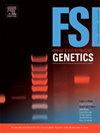Birgitte Tengs案例:分析和对DNA证据评估的更广泛影响
IF 3.1
2区 医学
Q2 GENETICS & HEREDITY
引用次数: 0
摘要
伯吉特·滕斯案是对1995年挪威东南部Karmøy市发生的一起历史性谋杀案的一项引人注目的调查。进行了快速突变Y-STR分析,以确定可能的违法者。这项工作进行了几年,涉及四个国际实验室的合作。根据DNA证据,被告于2023年2月被定罪,但同年晚些时候,他在上诉中被无罪释放。在上诉之前进行了新的调查,产生了新的证据。新的证据为第一次审判中定罪严重依赖的污渍中Y-STR的存在提供了另一种解释。尽管有先进的技术,如大规模平行测序和涵盖挪威及其他地区的广泛家谱研究,但该判决揭示了系统性问题,包括确认偏见和反向举证责任。该案件突出了根据提出主张的级别(例如次级来源或活动)解释结果的极端重要性,因为不这样做可能导致潜在的司法不公。在这里,我们提出,当没有确定有意义的(具体的)辩护活动命题时,旨在最大化证据支持辩护替代方案的可能性的代理实验将发挥重要作用。贝叶斯网络是一种有用的方法,可以为法院提供详尽的DNA转移方法列表,并具有信息说明特性。然而,这样的网络只有在能够填充信息概率的情况下才能帮助实际的概率计算,而这只有在实验设计达成一致的情况下才会发生。本文考察了法医方法、审判结果和上诉法院判决,确定了科学家和法院之间的合作可以改善决策的领域。它提出了实验设计和框架,以加强活动层面的评估,为尽量减少司法不公和更好地将法医遗传学纳入法律体系提供见解。本文章由计算机程序翻译,如有差异,请以英文原文为准。
Birgitte Tengs case: Analysis and the wider implications for evaluation of DNA evidence given activities
The Birgitte Tengs case was a high-profile investigation into an historic 1995 murder in Karmøy municipality, South East Norway. Rapidly mutating Y-STR analysis was carried out to identify a possible offender. The work was carried out over several years and involved a collaboration of four international laboratories. Based on the DNA evidence, in February, 2023, the defendant was convicted but later that year, he was exonerated on appeal. New investigations, resulting in new evidence, were carried out before the appeal. The new evidence gave alternative explanations for the presence of Y-STR in a stain that the conviction in the first trial relied heavily on.
Despite advanced techniques such as massively parallel sequencing and an extensive genealogy study encompassing Norway and beyond, the judgment revealed systemic issues, which included confirmation bias and reverse burden of proof. The case highlighted the critical importance of interpreting results according to the level at which propositions were made (e.g. sub-source or activity), as failure to do so could contribute to potential miscarriages of justice. Here, it is proposed that when there is no meaningful (specific) defence activity proposition identified, proxy experiments designed to maximise the probability of evidence supporting the defence alternative, will play an important role. Bayesian networks are useful methods to provide courts with lists of exhaustive methods of DNA transfer and has information illustrative properties. However, such networks can only help in actual probability computations if they can be populated with informative probabilities, and this can only happen if there is agreement on an experimental design to follow.
This paper examines the forensic methods, trial findings, and appeal court verdict, identifying areas where collaboration between scientist and court could improve decision-making. It proposes experimental designs and frameworks for enhancing activity-level evaluations, offering insights into minimising miscarriages of justice and better integrating forensic genetics into legal systems.
求助全文
通过发布文献求助,成功后即可免费获取论文全文。
去求助
来源期刊
CiteScore
7.50
自引率
32.30%
发文量
132
审稿时长
11.3 weeks
期刊介绍:
Forensic Science International: Genetics is the premier journal in the field of Forensic Genetics. This branch of Forensic Science can be defined as the application of genetics to human and non-human material (in the sense of a science with the purpose of studying inherited characteristics for the analysis of inter- and intra-specific variations in populations) for the resolution of legal conflicts.
The scope of the journal includes:
Forensic applications of human polymorphism.
Testing of paternity and other family relationships, immigration cases, typing of biological stains and tissues from criminal casework, identification of human remains by DNA testing methodologies.
Description of human polymorphisms of forensic interest, with special interest in DNA polymorphisms.
Autosomal DNA polymorphisms, mini- and microsatellites (or short tandem repeats, STRs), single nucleotide polymorphisms (SNPs), X and Y chromosome polymorphisms, mtDNA polymorphisms, and any other type of DNA variation with potential forensic applications.
Non-human DNA polymorphisms for crime scene investigation.
Population genetics of human polymorphisms of forensic interest.
Population data, especially from DNA polymorphisms of interest for the solution of forensic problems.
DNA typing methodologies and strategies.
Biostatistical methods in forensic genetics.
Evaluation of DNA evidence in forensic problems (such as paternity or immigration cases, criminal casework, identification), classical and new statistical approaches.
Standards in forensic genetics.
Recommendations of regulatory bodies concerning methods, markers, interpretation or strategies or proposals for procedural or technical standards.
Quality control.
Quality control and quality assurance strategies, proficiency testing for DNA typing methodologies.
Criminal DNA databases.
Technical, legal and statistical issues.
General ethical and legal issues related to forensic genetics.

 求助内容:
求助内容: 应助结果提醒方式:
应助结果提醒方式:


